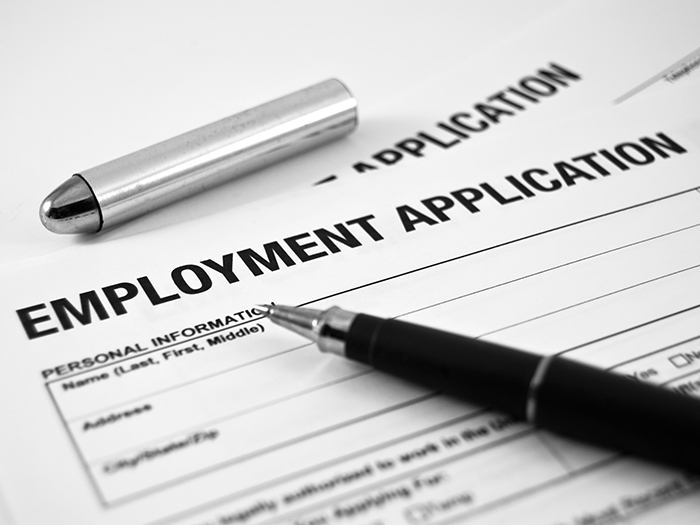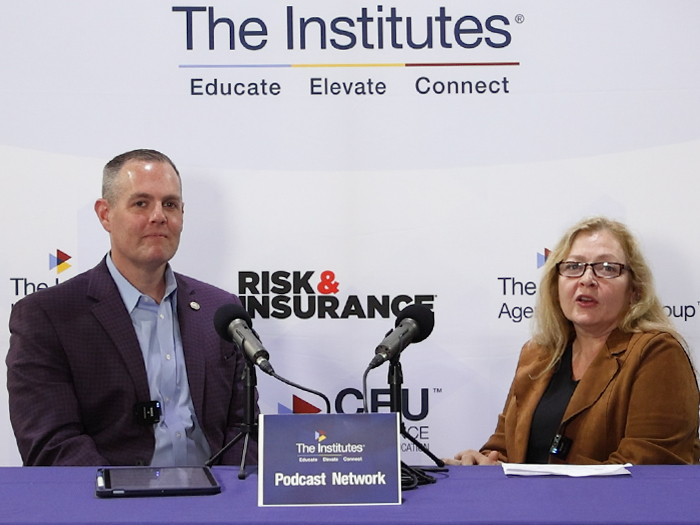Sponsored Content by Nationwide
5 Regulatory Changes that Could Increase Your EPL Risk. Insureds Need to Prepare Now

Employment practices liability has always been a significant exposure for both public and private companies, but recent social movements have intensified the risk.
Consumers are keeping a close watch on corporations to ensure they treat employees fairly. In addition to costly lawsuits for discrimination or harassment, companies could also face severe reputational damage.
Now the regulatory compliance bar is being set even higher. Various states are adopting legislation to enforce stricter standards that consumers already expect companies to uphold.
Here are five regulatory changes that are increasing employment practices liability risk for companies across the country:
1) Boards of Directors must have female representation.

Joseph Werner, Director, Employment Practices Liability, Management Liability and Specialty, Nationwide
In September 2018, California legislators signed into law a mandate that any publicly held company whose principal executive offices are located in the state must have women on the board of directors.
By the end of 2019, such companies must have at least one woman on the board. By the end of 2021, that number will go up to two if there are at least five members on the board or three if there are at least six board members.
“They are definitely trying to move the needle as far as gender diversity and representation of women in leadership positions,” said Joseph Werner, Director, Employment Practices Liability, Management Liability and Specialty, Nationwide.
Companies that don’t comply with the law will be fined $100,000; subsequent violations will be fined at $300,000. Organizations should expect their insurers to ask about their compliance with the California law and overall diversity as an indicator of risk.
“I expect that compliance with the new California law will be part of our overall evaluation of an employment practices liability risk. Obviously, non-compliance would be a violation of California law, but non-compliance may also infer a disregard of diversity initiatives within an organization,” Werner said.
2) Plaintiffs have a lower bar to clear to bring claims.
California also passed legislation lowering the burden of proof for plaintiffs to establish harassment claims. Historically, a claimant would have to show that the alleged harassment was severe and pervasive — or that it was more than an isolated incident — and that it created a hostile work environment.
“Typically, plaintiffs have a significant hurdle to climb in harassment claims. They need to show that conduct was egregious and persistent enough to rise to the level of harassment. Many cases are dismissed at summary judgment because plaintiffs cannot demonstrate sufficient misconduct on the part of defendants that would allow a case to go to trial and have a jury decide if harassment occurred. Even the EEOC’s website states that petty slights, annoyances and isolated incidents are not sufficient to establish harassment,” Werner said.
Now that the new law is in effect, however, harassment cases in California are more likely to survive summary judgment – which will force more companies to go to trial or settle the cases against them.
“Now, in California, a plaintiff need only show that a single incident created an environment that unreasonably interfered with the plaintiff’s work performance in order to create triable issues sufficient to pass summary judgment. I believe this will lead to greater costs to any company defending any claim as more cases will actually be able to get to trial,” Werner said.
A lower burden of proof may motivate more claimants to come forward if they believe their chances of success in court are greater.
The State of New York enacted a similar law just a few months ago. Rather than showing that any harassment was severe and pervasive, a plaintiff must simply show he or she was subjected to inferior terms, conditions or privileges of employment.
3) “Ban the Box” legislation is spreading through the states.
 The EEOC’s E-RACE initiative was launched in 2008. Part of that initiative arose from the EEOC’s position that some standard employment practices utilized by employers are unfair to certain groups of employees or applicants, and points to an employer’s practice of making employment selections based on arrest and conviction records as conduct that may disparately impact certain minority groups. The initiative has brought about significant case law concerning the legality of asking applicants about any prior arrest and convictions.
The EEOC’s E-RACE initiative was launched in 2008. Part of that initiative arose from the EEOC’s position that some standard employment practices utilized by employers are unfair to certain groups of employees or applicants, and points to an employer’s practice of making employment selections based on arrest and conviction records as conduct that may disparately impact certain minority groups. The initiative has brought about significant case law concerning the legality of asking applicants about any prior arrest and convictions.
Now, at least 35 states have passed laws that ban employers from this practice. But there are significant differences in the approaches taken by states. While most states prohibit the use of prior conviction questions on employment applications, they differ when it comes to what employers may do after the initial application. Most states allow employers to ask about criminal history during an interview, while others only permit a background check after a conditional offer of employment is made.
If an employer cites criminal history as reason for rescinding an offer, though, recent precedence requires that there must be a relationship between the conviction and the job function in order to comply with employment laws.
“If you had a prior conviction for embezzlement, but you’re disqualified from a job on the manufacturing line, the plaintiff could make an argument that there’s no relationship between the two and they are being discriminated against,” Werner said. “If that same person who embezzled was applying in the accounting department, that’s a different story.”
4) Non-disclosure clauses in settlement agreements are becoming prohibited.
Lots of settlement agreements include a non-disclosure provision. Money is paid, but only if the plaintiff agrees not to mention the case again.
“Basically, people got hush money,” Werner said. “From an employment practices perspective, such settlements enabled individuals to continue behaving improperly. Companies were really just using these agreements to sweep abuse and harassment under the rug. Wrongdoers remained in their positions, and the culture of the company didn’t change.”
California and New York both passed laws prohibiting non-disclosure clauses from settlements of sexual harassment or discrimination claims.
“Individuals are more likely to settle the claims brought against them if they knew their name and the terms of the settlement would stay confidential. With the new restrictions on settlement agreements, defendants may not think there is any advantage to settling, as they may be exposed by plaintiffs regardless. So now they may be more inclined to go to court to defend their reputation,” Werner said.
That means exponentially higher legal defense costs for defendants and higher attorney fees for plaintiffs, resulting in significantly higher claim costs for employers and their insurers.
5) The EEOC is requiring salary data on EEO-1 reports.
Every year the EEOC requires employers with more than 100 employees to submit an EEO-1 survey indicating the demographic breakdown of its employees across 10 job categories. This year, the EEOC is taking things a step further and asking for salary data across those job categories as well.
“With the original survey, we were able to look into an employer’s diversity across the 10 job categories. Now, the new survey will also provide an indication of the rate of pay based on the gender, race and national origin of a company’s employees,” Werner said.
“As an underwriter, the information in the new report is invaluable. It could provide insight as to any issues of pay discrepancies within an organization as it relates to either gender, race or national origin. Large pay discrepancies could lead to potential class actions for unequal pay, and the data in this new report will be helpful for us in assessing risk, but I’m afraid it may also be a tool for the EEOC to bring direct actions against employers,” he said.
Employers have challenged this requirement but with little success.
A Long-Term Insurance Partner Focused on Risk Management
While most of the legislative changes mentioned are state-specific, they are likely to develop into national trends. Companies should assume that all states will eventually adopt similar legislation.
EPL insurers will be looking more closely at companies to ensure they stay a step ahead of impending regulatory and legislative changes. Proactive employers will be able to mitigate their employment liability exposure and reduce legal expenses. Employers that lag behind, however, face higher costs in potential employment-related risks and potentially higher insurance rates.
Nationwide, however, has focused on disciplined underwriting and accurate pricing from the beginning.
“Barring any significant changes in an insured’s risk, our policyholders won’t see dramatic rate increases from year to year because of that discipline. We are in this business for the long run,” Werner said.
That discipline also enables underwriters to tackle more complicated risks. Where other carriers may not consider underwriting certain types of high-risk industry sectors, Nationwide evaluates every submission on its own merit. That includes taking into consideration every effort an entity has made to reduce its exposure.
Nationwide also provides high-end risk control services to its policyholders. Through a partnership with the law firm Littler Mendelson, for example, insureds can call a hotline for legal guidance, access a website detailing the employment-related laws, rules and regulations in their state, and use tools to help craft legally compliant policies and procedures. Other risk control services are also provided through multiple vendor partnerships, some that include access to online anti-harassment and anti-discrimination training.
“We provide incentives in our policy to reduce the self-insured retention applicable in the policy if an insured utilizes those services,” Werner said. “These tools are a good way to reduce risk and insurance costs.”
To learn more, visit https://mls.nationwideexcessandsurplus.com/fs/products/all-products/ or contact Joe Werner, director, at 212-329-6961 or [email protected].
For more information about Nationwide’s EPL loss control services, visit www.freedom360hr.com and http://nationwide.hrcare.com.
About Nationwide
A.M. Best Rated A+ XV | S&P A+ | Fortune 100 Company
Products underwritten by Nationwide Mutual Insurance Company and Affiliated Companies. Not all Nationwide affiliated companies are mutual companies, and not all Nationwide members are insured by a mutual company. Home Office: One Nationwide Plaza, Columbus, OH. Nationwide, the Nationwide N and Eagle, and other marks displayed on this page are service marks of Nationwide Mutual Insurance Company, unless otherwise disclosed. © 2019 Nationwide Mutual Insurance Company.
This article was produced by the R&I Brand Studio, a unit of the advertising department of Risk & Insurance, in collaboration with Nationwide. The editorial staff of Risk & Insurance had no role in its preparation.










